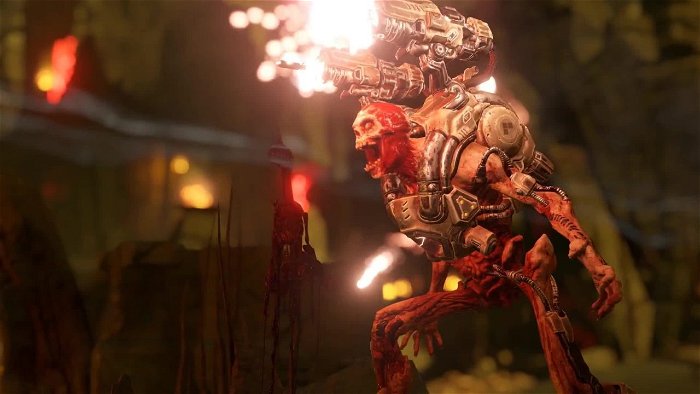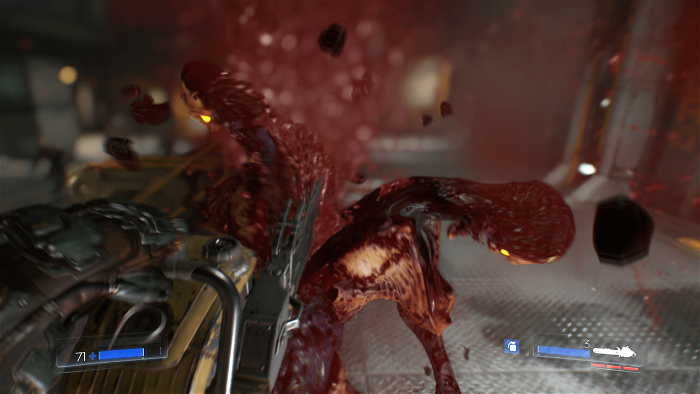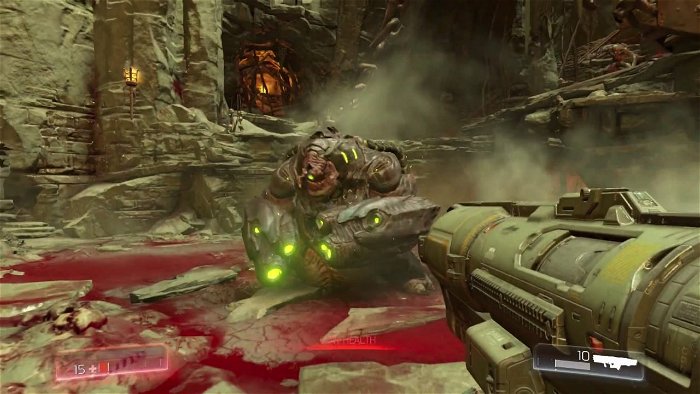Like many people my age, I feel as though I’ve outgrown—or at least become fatigued with—the FPS genre. I’ve been playing FPS games since the original Doom essentially created the genre way back in 1993. However, 20+ years of running around and shooting things eventually grew stale, especially with the re-rise of the Call of Duty series and its endless series of unlocks, upgrades, and stale design principles. I’ve moved on to other genres, and up until a week ago, actually playing and enjoying an FPS seemed like an experience I was not likely to find myself doing ever again. It’s not that I’m against the genre, it’s just “not for me”.
Having said that, Doom is (so far) easily my GOTY for 2016. I’m flabbergasted as to how much I’m loving this game, and for the first time in forever, I find myself actually excited to come home, pick up my DualShock, and go frag (so much fun to use that term again) some demons. And here’s the thing that really gets me: there is literally nothing to this game but running and gunning. There is no depth, no tinkering, no story, no puzzles, no open-world, and (thank the gods) no cutscenes. All you do for the entire game is run, jump, and kill demons. Outside of the gorgeous graphics, from a gameplay perspective, Doom 2016 is basically no different than Doom 1993; and it’s the most fun I’ve had with a game all year—easily.

I’m clearly not the only one who feels this way either. Despite decent, but not incredible, reviews, gamers are going nuts over Doom. I haven’t seen NeoGAF react so positively to a game in forever. Everyone seems to love the game, but I cannot nail down exactly why.
For comparison purposes, I’m going to use another recent release and likely GOTY contender, Naughty Dog’s glorious sendoff to Nathan Drake: Uncharted 4. As with previous entries in the series, UC4 features unparalleled production values, wonderful and believable voice acting, smooth, addictive gameplay, an incredible musical score, entertaining and thrilling set pieces, and a story and characters that you can’t help but fall in love with. Taken individually, UC4 blows Doom out of the water in nearly every conceivable category, and yet, I haven’t touched the game since Doom came out.

Perhaps over-analyzing a game by breaking it down to individual metrics, an unfortunate side effect of working in the industry, is the root of the problem. As reviewers, we dissect a complete package into separate little pieces, critique each one as a part, then sit back and try to view the game as a whole package—and can’t. It’s the old “can’t see the forest for the trees,” idea and when it comes to games, that statement holds incredibly true. Especially so in an industry where every forest tries to cram in as many trees as possible. AAA games are incredibly restricted by this, and very few actually pull it off. Either they manage the impossible and get everything perfect, as is the case with UC4, or they try too hard and the entire package becomes laden with flawed parts that drag it down.
Sure, there’s always indie games that take a single idea and run with it, believing that there is in fact elegance in simplicity. Rather than attempting to get everything right on a huge scale, developers focus on one idea and perfect it. This is all well and good, but Doom somehow manages to do both these things incredibly well by succeeding in the one area that a videogame should focus on: making it fun.

I suppose, in the end, this is what the devs at id pulled off with Doom. From the get-go, everything was stacked against this game being good. Reboots of old series often miss the point of what made the original fun, or they try to mimic what made the title successful in the first place forgetting that the industry has evolved quite a bit since the initial game. Look at Duke Nukem Forever and how poorly that went. The world is a lot different than it was in the early 90s, and what worked then often doesn’t work in this new environment. But here we are, playing and loving a game that is nothing more than a faster, shinier version of its 23-year-old predecessor.
Whether or not this trend is something that can be repeated by other studios remains to be seen, but if we are due for another Quake, or yet another attempt at Duke Nukem, the team that successfully resurrected the OG’s of the genre in Doom and Wolfenstein should be the ones making it. Not every game requires a gigantic, open-world, an immersive and engaging story, or well-directed and acted cutscenes. Sometimes, going back to basics is the best bet. Regenerating health? Realistic, two weapon restriction? Vehicles and side quests and chatty NPCs? Nah, screw that. Give me health packs, tight, well-designed linearity, and some big scary demons to shoot with cool weapons and—apparently—I’ll enjoy the hell out of it.




